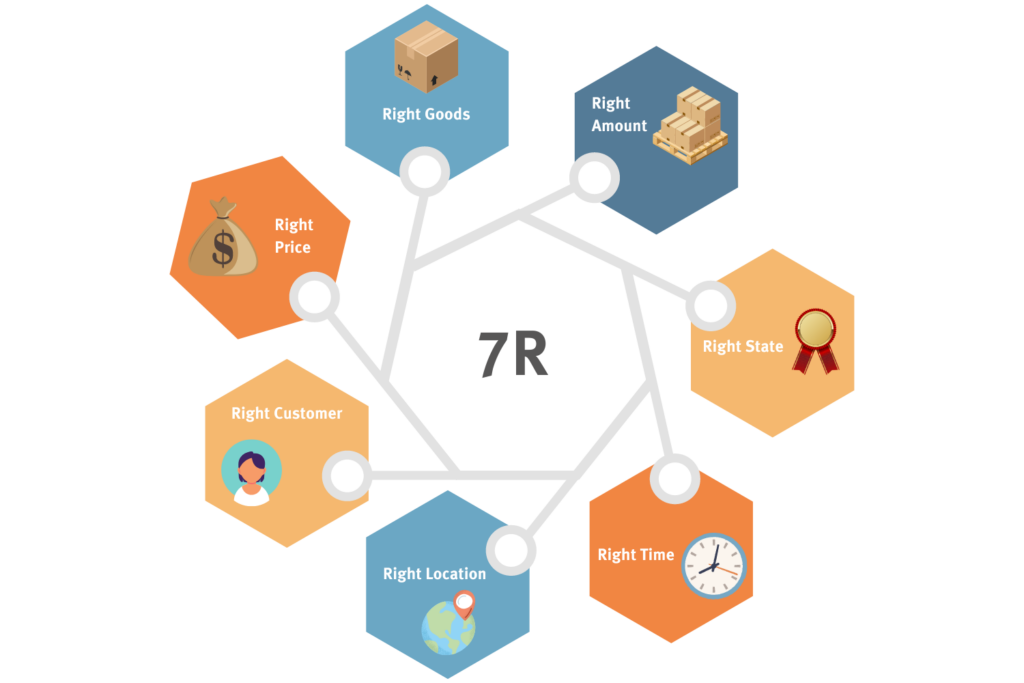Logistics
The historical origins of the term logistics have different roots. In ancient Greek, the word “logistikē” refers to practical arithmetic. The French word “logistique”, meaning replenishment, was derived from it.
What is logistics?
The term can refer to an economic sector, an industry and a business task. Generally speaking, logistics refers to planning, executing, coordinating and controlling material and immaterial flows of goods. Thus, it comprises not only flows of goods and information, but also flows of persons.
The fundamental task is to permanently ensure all processes regarding transport, storage, provision, procurement and distribution of goods, persons, money, information and energy. The sector is thus an interface between economy, trade and the end customer in the logistics network. Without this interface, goods and information would not be available, nor could they be conveyed.
Logistics flows can exist between multiple companies (service providers, consumers, suppliers, manufacturers), within a company or between suppliers and end customers.
The term is concerned with flows of goods and information within a company. In the English-speaking world, the term is used synonymously with supply chain management. In contrast to logistics, supply chain management (SCM) is the extension of the processes beyond the company, i.e. the intelligent planning and control of entire added-value chains. Thus, this chain displays the path of goods from procurement and manufacturing to delivery.
Which subareas are there in logistics?
In business administration, logistics is commonly divided into four subareas that, together, form an added-value chain:
The first sector is procurement logistics, which deals with ordering the required goods (commodities, materials) and selecting the suppliers.
Production logistics is focussed on planning, controlling and monitoring all processes dealing with transport, transshipment and storage, i.e. the supervision of all goods stocks and goods transactions.
Distribution logistics (synonym: sales logistics) is concerned with distributing and selling goods. Delivery services, packages and distribution paths are also components of distribution logistics.
Disposal logistics, as the fourth subarea, runs through all of the other subareas and takes place simultaneously. After all, the disposal of waste and recycling as well as the management of returns needs to be guaranteed along the entire value-adding process.
The first steps–procurement, production and distribution–take place successively and are connected to each other, so that, in the end, a long value chain is created: from the procurement of commodities to the production of goods, marketing, and shipping.
What are the goals of logistics?
The superordinate goals are the continual optimisation of logistics products, services, and processes. This optimisation is to have the following results:
- Smooth supply chain from the manufacturer up to the customer
- Cost reduction for logistics activities
- Improvement of the flexibility of logistics systems
- Increase of quality, service and flexibility
The “Seven Rights Definition” by Grosvenor E. Plowman (1964) is considered an industry standard by now. As a short definition, it presents the essential core logistics aspects in the form of seven “Rs”. These core aspects need to be carried out correctly for a logistics task to be completed successfully.
This definition contains the guarantee of the availability of:
the right goods
in the right amount
in the right state
at the right location
at the right time
for the right customer
at the right price.

Plowman’s definition, as the logistics sector, is in constant flux and is at times used in varying degrees of detail. For years, the main focus was on these four “Rs”: right product, right quality, right time and right location. Now, in other sources, additional “Rs” are used as well, e.g. the right service and packaging (sustainability and protecting the environment).
Which companies are part of the sector?
The sector can be roughly divided into two areas which, however, consist of many different companies. Logistics is of central importance for almost all economic sectors.
External logistics (outside of the company) with transport, traffic, warehousing and transshipment companies accounts for the largest share. This includes, for example, forwarding companies, carriers, port and airport operators, rail transport companies, bus companies and parcel services. In contrast, so-called intralogistics only makes up a small part of the sector and refers to the flow of materials within the company and company-internal logistics. Intralogistics includes companies such as software and hardware companies, operational facilities and providers of technical services in the area of automation/warehousing/loading/transport/order picking/packaging.